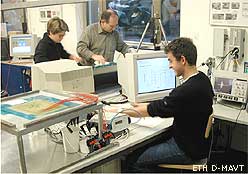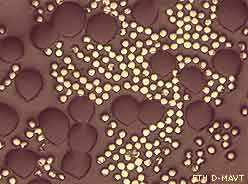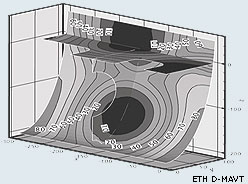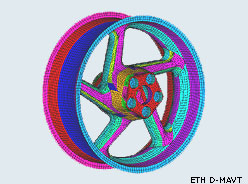|
ETHistory 1855-2005 | Rückblicke | Departemente | MAVT | none | Zentrum für Strukturtechnologie |
|
|
Wichtiger Hinweis:
Diese Website wird in älteren Versionen von Netscape ohne graphische Elemente dargestellt. Die Funktionalität der Website ist aber trotzdem gewährleistet.
Wenn Sie diese Website regelmässig benutzen, empfehlen wir Ihnen, auf Ihrem Computer einen aktuellen Browser zu installieren.
Weitere Informationen finden Sie auf
folgender Seite.
Important Note:
The content in this site is accessible to any browser or Internet device,
however, some graphics will display correctly only in the newer versions of
Netscape.
To get the most out of our site we suggest you upgrade to the latest
Netscape.
More information
The Centre of Structure Technologies is teaching and researching in the field of advanced engineering structures. We are motivated by the desire to optimally implement the outstanding mechanical and functional properties of composites and adaptive materials into innovative structural systems combining load-carrying capability with new functionalities. The Centre is closely co-operating with various national and international research institutes and industries, seeking a well-balanced portfolio of fundamental and more applied projects.
 |
Teaching is concentrating in the higher semesters, i.e. starting from the 3rd Year. Our specialization in Lightweight Structures and Technologies deals with different aspects related to the design, analysis and manufacturing of lightweight structures and is very popular among the students. |
Our research approach is considering the strong interaction between constituent materials, manufacturing and structural design. In the field of materials and process technologies, we develop and characterise material systems for fast processing of geometrically complex composite structures and investigate resin impregnation phenomena on micro-, meso- and macro-scale. We implement our models in numerical simulation-tools and use process simulation to develop intelligent injection strategies based on closed-loop process-control in combination with evolutionary algorithms.
 Micrograph of a hybrid-Yarn. During Processing, the Thermoplastic Fibre (dark brown) Melts and Impregnates the Light Coloured Reinforcing Fibre. |
 Simulation of the Liquid Resin Injection Process in a Fibre Preform using the In-House developed FEM-code FELyX. |
| Smart structures represent a very promising field of activity. Thus we are giving more and more attention to the development of distributed actuators and sensors based on functional polymers and ceramic materials, and their integration in smart composite structures for different purposes such has vibration, noise and shape control. |
 Detail of an Active Fibre Composite Actuator |
The computational structural mechanics group is interested in developing original mechanical models, in conjunction with more efficient numerical methods to design optimised structures. Here, we use optimization engines based on mathematical programming as well as evolutionary algorithms in combination with our own numerical tools for solving real-world engineering problems, which is the finding of best design solutions for load carrying structures under a complex set of constraints.
 FEM-Idealisation of a CFRP Racing Motorcycle Rim |
 Parametric Associative Representation of a Passenger Aircraft |
The constraints can stem from manufacturing, functional, regulatory, cost, or any other type of requirement. Today’s knowledge-based CAD-parametric associative representation of structures with evolutionary algorithms offers fascinating opportunities for elegantly solving such problems and provides an attractive field of research.
|
|